The essence of Roothea’s ‘living library’ lies in recognizing that hair, particularly textured hair, is far more than a biological construct; it is a profound repository of heritage, a living narrative woven through generations. The exploration of Hair Texture within this archive, therefore, transcends mere scientific classification, inviting a deep appreciation for its ancestral echoes, its tender threads of community care, and its unbound helix of identity and future aspirations. This understanding requires a harmonious blend of historical reverence, holistic advocacy, and accessible scientific insight, all steeped in the rich soil of Black and mixed-race hair traditions.
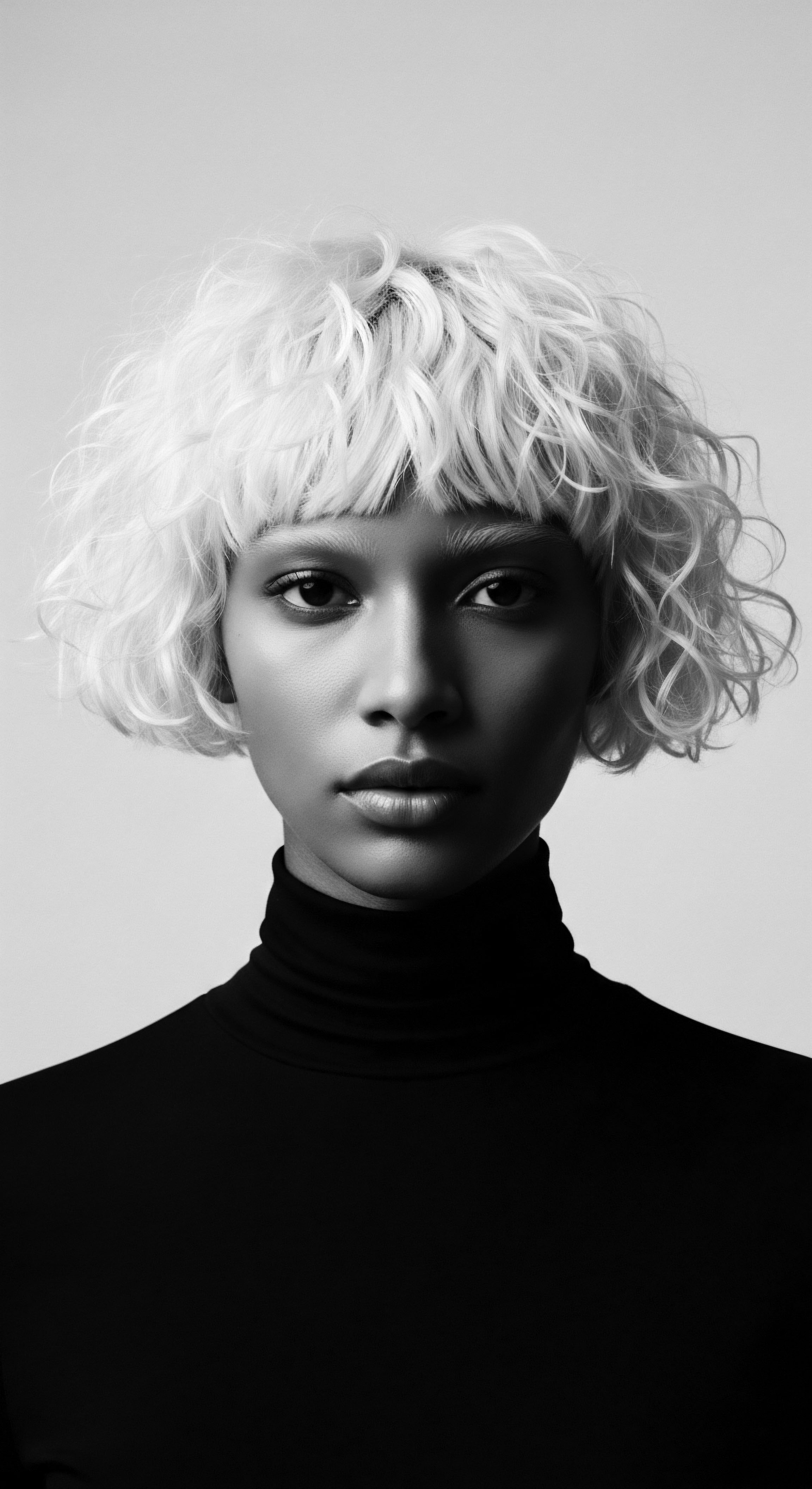
Fundamentals
The term Hair Texture, in its simplest sense, refers to the inherent characteristics of an individual hair strand, dictating its shape, curl pattern, and overall feel. It is a fundamental aspect of how hair presents itself, a foundational identifier that distinguishes one person’s crown from another. For many, this initial understanding might bring to mind categories like straight, wavy, curly, or coily.
These classifications serve as an initial explanation, a basic delineation, helping us begin to grasp the vast spectrum of human hair. This inherent quality is determined at the follicular level, a microscopic blueprint that guides the hair’s growth from its very source.
Each strand carries within it a silent story, a subtle designation of its form. The shape of the hair follicle itself plays a primary role; a round follicle tends to produce straight hair, while increasingly oval or flattened follicles give rise to waves, curls, and the tightly coiled patterns so often celebrated within Black and mixed-race communities. This basic concept provides a starting point for comprehending the physical manifestation of hair, setting the stage for a deeper exploration of its cultural and historical significance.
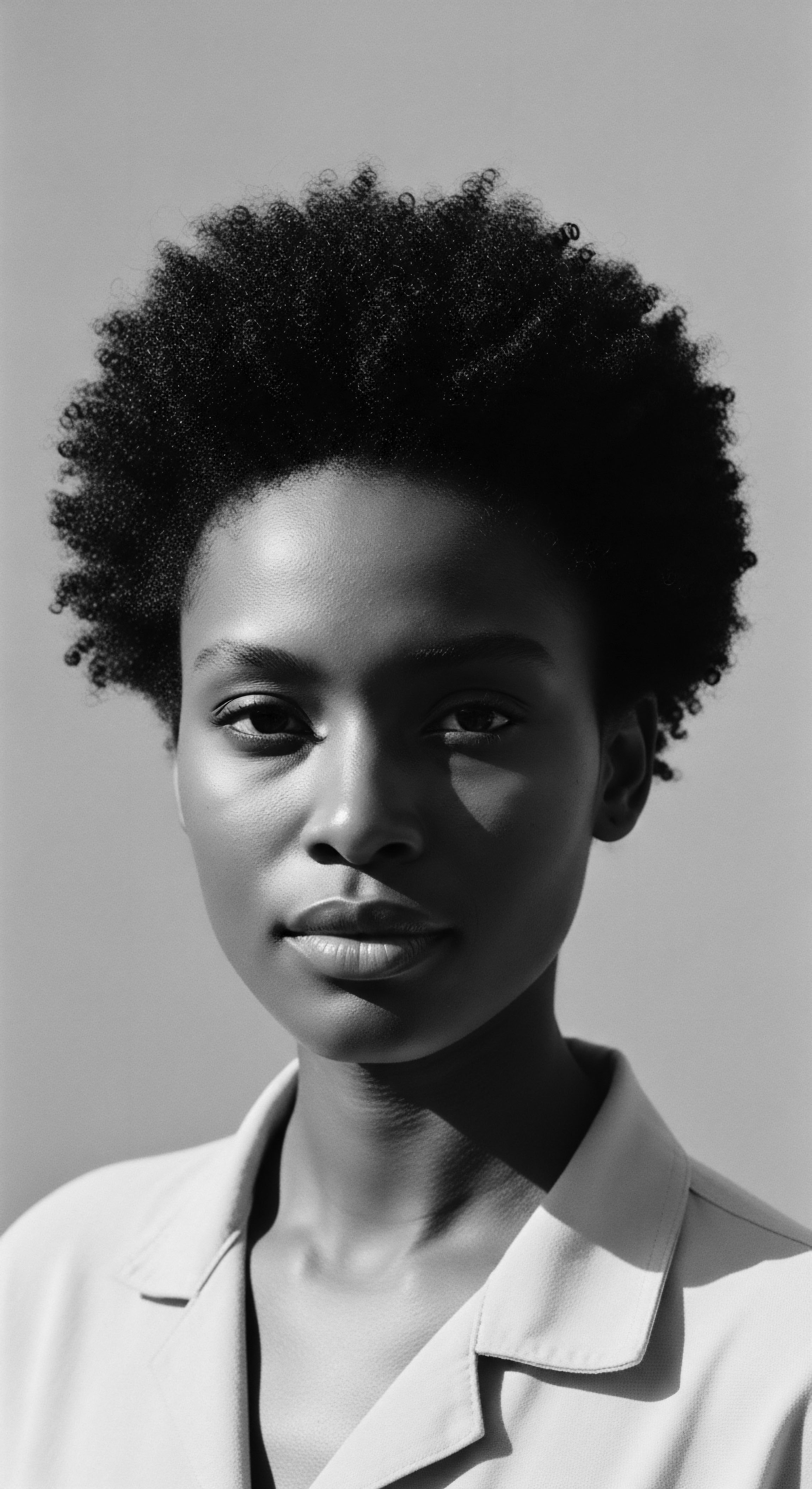
The Initial Whisper of Form
Even at a rudimentary level, the meaning of Hair Texture extends beyond simple appearance. It speaks to the hair’s behavior, its response to moisture, its propensity for shrinkage, and its unique requirements for care. For those new to the discourse of textured hair, recognizing these foundational attributes is the first step towards a journey of appreciation. This initial interpretation acknowledges the visible distinctions, paving the way for a more profound understanding of what lies beneath the surface, both biologically and culturally.
Hair Texture, at its most basic, is the inherent shape and curl pattern of a hair strand, a foundational aspect determined by its follicle.
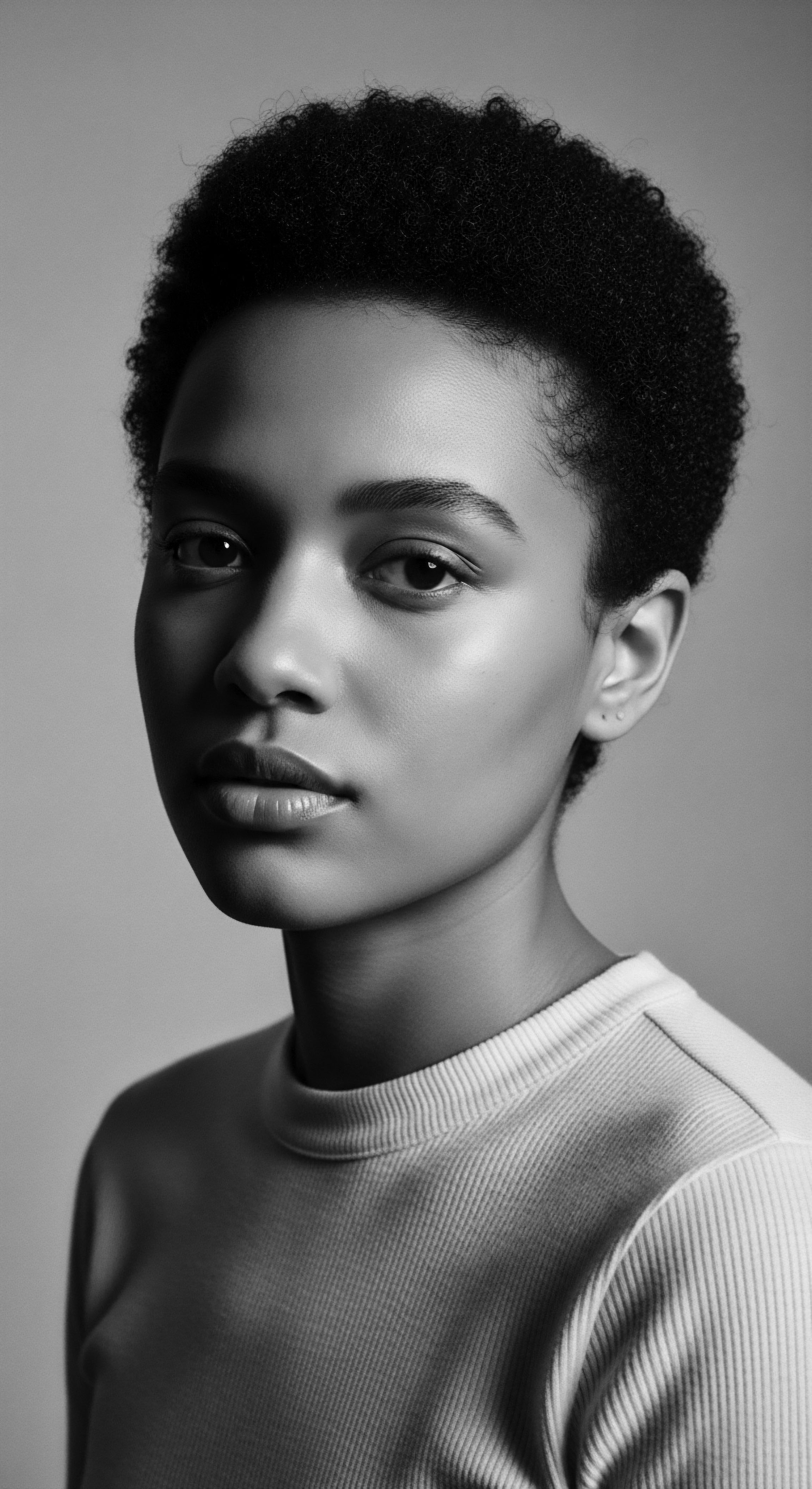
Distinguishing the Strands
In many traditional societies, particularly those of African descent, the observation of hair texture was not merely a casual assessment; it was a practical and communal understanding. Before the advent of modern science, communities developed intuitive methods for categorizing and caring for hair based on its visible characteristics. This early classification, though perhaps not formalized with scientific nomenclature, served a vital purpose in developing ancestral hair care practices. It was a form of empirical knowledge, passed down through the generations, recognizing that different hair forms required different approaches to nurturing and adornment.
- Straight Hair ❉ Often observed to fall smoothly, resisting curl.
- Wavy Hair ❉ Characterized by gentle S-shaped curves, offering movement.
- Curly Hair ❉ Displays more defined spirals, coiling away from the scalp.
- Coily Hair ❉ Distinguished by tight, spring-like formations, often with a zigzag pattern, known for its density and unique shrinkage.
This rudimentary understanding of hair’s intrinsic nature formed the bedrock upon which elaborate styling traditions and community rituals were built. It was a collective recognition of the hair’s unique character, a testament to the ancestral wisdom that preceded contemporary scientific frameworks.
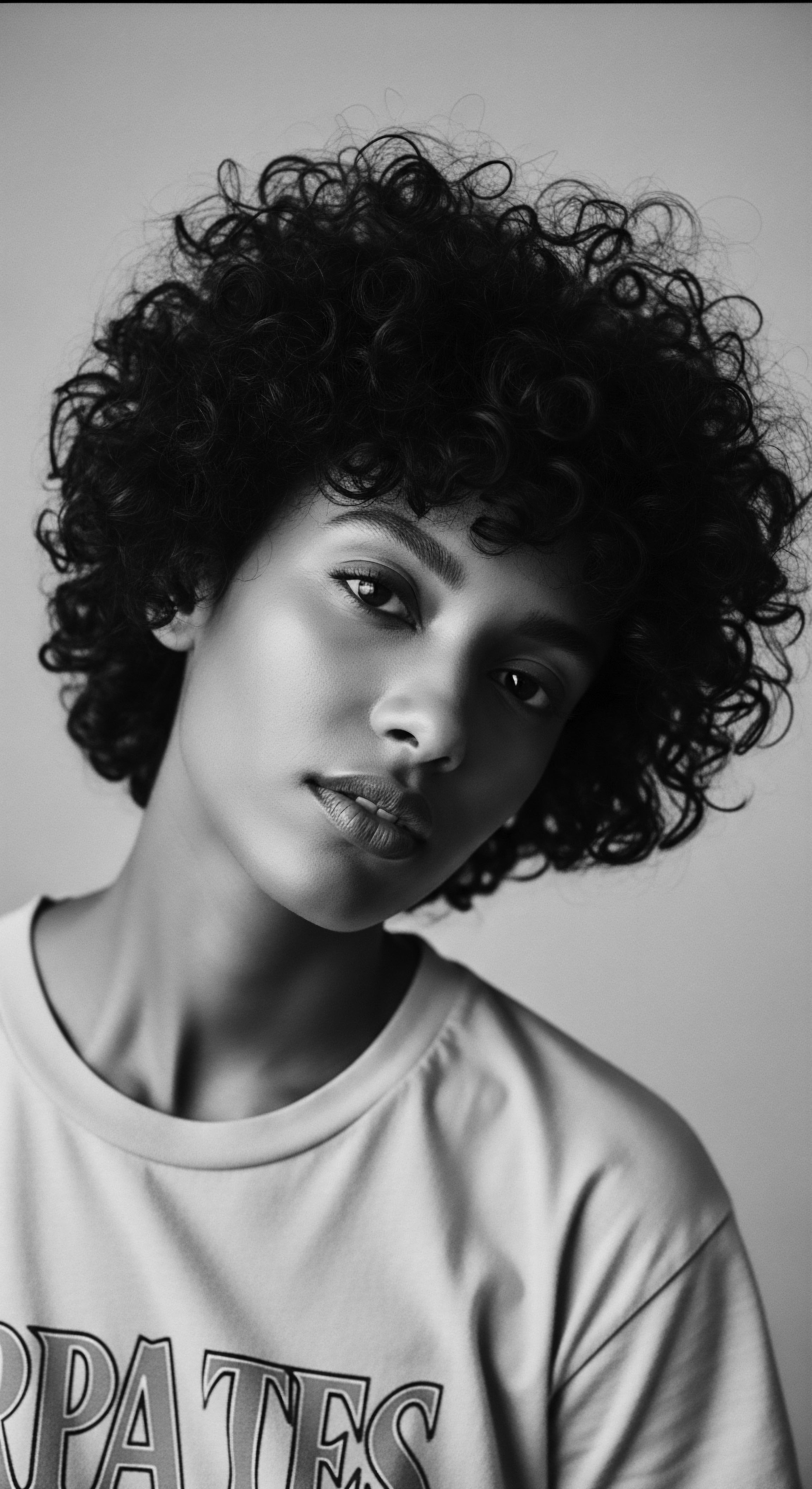
Intermediate
Moving beyond the initial observation, an intermediate understanding of Hair Texture begins to unpack the subtle yet powerful influences that shape a strand’s character. This deeper delineation acknowledges that texture is not a monolithic concept but a spectrum, a rich continuum of variations influenced by the very architecture of the hair follicle and the composition of the hair shaft itself. It is here that we begin to bridge the gap between simple visual identification and the underlying biological mechanisms, recognizing that the hair’s outward appearance is a direct consequence of its internal structure.
The significance of Hair Texture at this level resides in comprehending how the internal elements of a hair strand contribute to its external behavior. For individuals with textured hair, particularly those of Black and mixed-race heritage, this means understanding why their hair may be more prone to dryness, shrinkage, or breakage, and how ancestral care practices often provided intuitive solutions to these very characteristics. It is a clarification that reveals the inherent resilience and unique needs of these hair types, fostering a more informed and respectful approach to their care.

The Architectural Blueprint of a Strand
Each hair strand is a marvel of biological engineering, composed primarily of keratin proteins arranged in distinct layers. The outermost layer, the Cuticle, consists of overlapping scales that protect the inner core. Beneath this lies the Cortex, which gives the hair its strength, elasticity, and pigment. Some hair types also possess a central Medulla.
The shape of the hair follicle, nestled within the scalp, profoundly dictates how these layers are formed and how the keratin fibers are aligned. A follicle that is perfectly round produces straight hair, allowing keratin to align symmetrically. As the follicle becomes more elliptical or kidney-bean shaped, the keratin proteins are deposited unevenly, causing the hair to curve and coil as it grows. This asymmetry is the fundamental biological explanation for the formation of waves, curls, and coils.
Hair Texture is profoundly influenced by the asymmetrical structure of the hair follicle, which shapes the keratin proteins into diverse curl patterns.
This intrinsic structural reality means that textured hair, with its often flattened or highly elliptical follicles, possesses unique biomechanical properties. The bends and turns in coiled strands create natural points of weakness, making them more susceptible to mechanical stress and breakage compared to straight hair. Furthermore, the raised cuticle layers on curved strands can make it more challenging for natural oils to travel down the hair shaft, contributing to a drier disposition. Understanding these scientific nuances provides a clearer sense of the hair’s inherent needs.
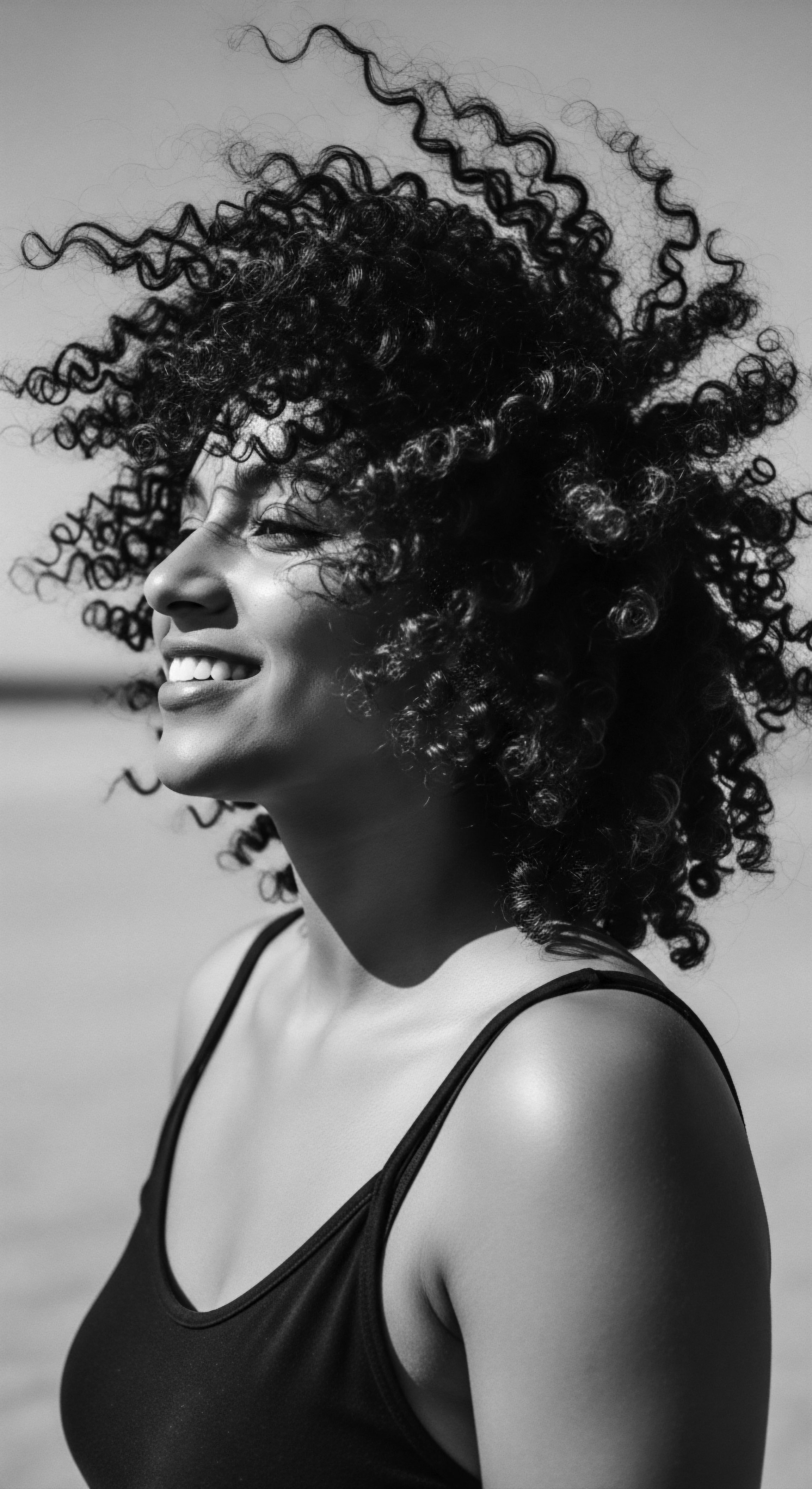
Beyond the Visible Curl ❉ Inner Dimensions
The term Hair Texture also encompasses characteristics beyond just the curl pattern, such as Strand Diameter (fine, medium, coarse) and Density (how many individual strands grow per square inch of scalp). These attributes, while often genetically determined, contribute significantly to the overall feel and behavior of the hair. A dense head of fine, coily hair will present and respond differently than sparse, coarse curls, each demanding tailored care strategies. This understanding moves beyond simplistic labels, encouraging a holistic perspective that honors the unique combination of attributes present in each individual’s hair.

Ancestral Interpretations of Hair’s Character
For centuries, African and diasporic communities intuitively grasped the unique properties of textured hair, developing sophisticated care rituals that predated modern scientific laboratories. Their practices, often passed down through oral traditions and communal gatherings, were rooted in deep observation of the hair’s inherent tendencies. They understood the hair’s inclination towards dryness and developed oiling traditions, utilizing natural emollients like shea butter, coconut oil, and various plant-based extracts to provide moisture and seal the cuticle.
They recognized the fragility of tightly coiled strands and employed protective styles like braids, twists, and locs to minimize manipulation and prevent breakage. These methods were not merely cosmetic; they were deeply practical, preserving the hair’s health and integrity within its natural state.
| Aspect of Hair Texture Moisture Retention |
| Ancestral Practice (Historical Context) Regular application of natural oils (e.g. shea butter, palm oil) and herbal infusions to hair and scalp, often during communal grooming sessions. |
| Modern Scientific Understanding (Contemporary Link) Acknowledging the elliptical follicle shape and raised cuticle of textured hair, which impedes sebum distribution, necessitating external emollients and humectants to hydrate and seal the hair shaft. |
| Aspect of Hair Texture Breakage Prevention |
| Ancestral Practice (Historical Context) Styling in protective configurations like intricate braids, cornrows, and twists to minimize daily manipulation and environmental exposure. |
| Modern Scientific Understanding (Contemporary Link) Recognizing the natural stress points created by high curvature and uneven keratin packing, which makes textured hair more fragile, thus benefiting from low-manipulation styles and bond-repairing treatments. |
| Aspect of Hair Texture Scalp Health |
| Ancestral Practice (Historical Context) Cleansing with natural clays or plant-based saponins (e.g. yucca root) and scalp massages to stimulate blood flow and distribute oils. |
| Modern Scientific Understanding (Contemporary Link) Emphasizing a balanced scalp microbiome and proper follicular health as crucial for robust hair growth, with gentle cleansing and targeted treatments to address specific concerns. |
| Aspect of Hair Texture This table illustrates the enduring wisdom of ancestral hair care, often aligning with modern scientific insights into the unique properties of textured hair. |
The wisdom embedded in these practices highlights a profound connection to the hair’s inherent nature, an understanding that transcended formal scientific inquiry. It was a holistic recognition of the Hair Texture’s needs, shaped by generations of lived experience and an intimate relationship with the natural world.
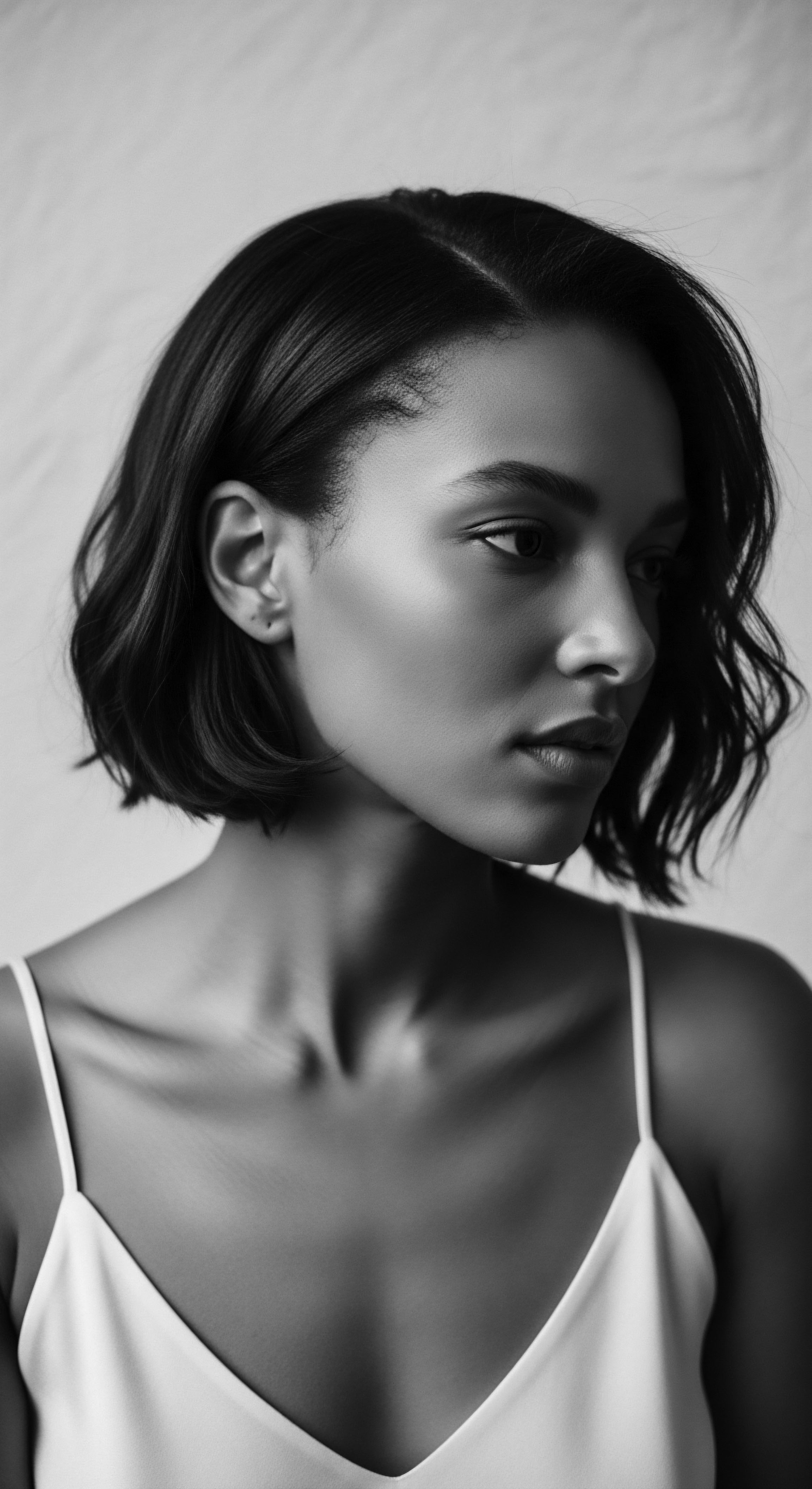
Academic
The academic meaning of Hair Texture transcends surface-level observation, delving into its complex biological underpinnings, evolutionary adaptations, and profound sociocultural ramifications, particularly within the vast tapestry of Black and mixed-race experiences. It is a concept whose explication requires a rigorous interdisciplinary lens, drawing from genetics, anthropology, dermatology, and sociology to delineate its full complexity. From this scholarly vantage point, Hair Texture is understood not merely as a physical trait but as a dynamic interplay of genetic inheritance, environmental pressures, and the enduring legacy of human migration and cultural adaptation. Its significance is magnified when viewed through the prism of heritage, revealing how deeply intertwined hair is with identity, status, and collective memory.
The precise definition, therefore, acknowledges Hair Texture as the phenotypic expression of the hair fiber’s three-dimensional geometry, primarily determined by the cross-sectional shape and curvature of the hair follicle, alongside the distribution and bonding of keratin proteins within the hair shaft. This intrinsic morphology, while universal in its biological principles, manifests in a diverse array of patterns, with tightly coiled hair being a uniquely human characteristic most prevalent in populations of African descent. This understanding of Hair Texture is a statement on human diversity itself, reflecting millennia of adaptive pressures and cultural evolution.

The Genetic Legacy and Environmental Dialogue
The inherent variation in human hair texture, from the straightest strands to the most tightly coiled spirals, represents a fascinating chapter in human evolutionary biology. Research indicates that the highly curved, elliptical hair follicle, characteristic of tightly coiled hair, likely evolved in equatorial Africa as a thermoregulatory adaptation. This particular hair configuration, with its ability to create an insulating layer above the scalp while allowing for air circulation, offered a distinct advantage in hot, arid environments by reducing solar heat gain and minimizing the need for evaporative cooling through sweat, thus conserving water. This adaptive response to environmental pressures meant that early humans with such hair textures could maintain cooler brain temperatures, a crucial factor in the development of larger brains.
The genetic determinants for hair curl are complex, involving multiple genes, with studies pointing to genes like trichohyalin and keratin 74 as having significant influence on hair shape. The prevalence of certain genetic variations in the KAP Cluster Genes in African populations, virtually absent elsewhere, further supports the notion of selective pressure shaping hair morphology after human dispersal from Africa.
Beyond these foundational genetic and evolutionary insights, the subsequent dispersal of human populations across diverse climates and geographies led to further variations in hair texture, demonstrating the ongoing dialogue between our inherited biology and the environments we inhabit. The resulting spectrum of textures across the global diaspora is a testament to this ancient journey, each curl and coil a living archive of human adaptation and movement.

Sociocultural Cartographies of Hair Texture
The meaning of Hair Texture extends profoundly into the sociocultural realm, where it has historically served as a potent marker of identity, status, and belonging within Black and mixed-race communities, while simultaneously becoming a site of systemic discrimination and oppression. In pre-colonial African societies, hairstyles were far more than aesthetic choices; they were intricate visual languages, communicating age, marital status, tribal affiliation, wealth, and spiritual beliefs. The practice of hair braiding, for instance, was a communal ritual, a moment of intergenerational bonding and the transmission of cultural knowledge. This historical context reveals hair texture as a central element in self-delineation and collective identity.
Hair Texture is a profound cultural identifier, historically signifying status and community within Black and mixed-race societies, yet simultaneously a site of systemic discrimination.
However, the transatlantic slave trade and subsequent colonial influences violently disrupted these traditions, forcibly shaving heads as an act of dehumanization and imposing Eurocentric beauty standards that devalued natural textured hair. This historical trauma laid the groundwork for enduring prejudices, where tightly coiled hair was often deemed “unprofessional,” “unruly,” or “unclean”. The concept of “good hair” emerged, often equating desirable hair with looser curls or straight textures, creating internal divisions within Black communities and perpetuating a hierarchy based on proximity to European hair types. This discriminatory ideology, known as Textureism, continues to manifest in various forms, from microaggressions in daily life to explicit hair discrimination in schools and workplaces.

The Echoes of Resilience ❉ A Case Study in Hair’s Enduring Spirit
The profound impact of hair texture discrimination on the mental and emotional well-being of Black individuals, particularly Black women, is a critical area of contemporary study. A significant statistic illuminates this ongoing struggle ❉ research from the Arizona State University Department of Psychology, published in the journal Body Image, revealed that Negative Experiences Related to Hair are Normative for Young Black Girls, with Even Girls as Young as 10 Years Old Reporting Such Encounters Due to Their Hair (Perez, Ismael, et al. 2022). This finding underscores how deeply ingrained hair-based prejudice is, impacting self-esteem and self-identity from an early age.
The constant pressure to conform to Eurocentric beauty standards, often involving chemical straightening or other altering methods, can lead to chronic stress, anxiety, and even feelings of cultural disconnection. The emotional investment in hair for Black women can be both empowering and debilitating, with “hair depression” being a recognized phenomenon where a lack of confidence or satisfaction with one’s hair can lead to feelings of sadness and low self-worth.
This reality is not merely anecdotal; it is systematically documented. A 2020 study by Duke University, for example, found that Black women with natural hairstyles were perceived as less professional and less competent, and were less likely to be recommended for job interviews than candidates with straight hair. Such biases contribute to real-world consequences, affecting educational and employment opportunities.
The legislative response, such as the CROWN Act (Creating a Respectful and Open World for Natural Hair) in the United States, which prohibits discrimination based on hair texture and protective hairstyles, represents a crucial step towards dismantling these systemic barriers. This legal movement is a direct acknowledgment of hair texture’s deep cultural and historical significance, and the necessity of protecting the right to express one’s inherited identity without fear of penalty.

Towards a Future of Affirmation
The continuous journey of Hair Texture, particularly within the Black and mixed-race diaspora, is one of persistent reclamation and celebration. The natural hair movement, gaining significant momentum from the 1960s Civil Rights era to the present day, serves as a powerful testament to this resilience. It represents a collective re-affirmation of intrinsic beauty, a rejection of imposed standards, and a profound connection to ancestral heritage. This movement, supported by community blogs and platforms, offers a space for shared experiences and collective healing, transforming hair from a site of trauma into a source of pride and self-expression.
Understanding Hair Texture from an academic perspective means acknowledging its intricate biological foundation, its evolutionary trajectory, and its profound, often painful, but ultimately triumphant, sociocultural narrative. It is an exploration that calls for not just scientific rigor but also a deep empathy for the human experience, recognizing that every strand carries the weight of history and the promise of an unbound future.
- Genetic Markers ❉ Variations in genes like trichohyalin and keratin 74 are strongly linked to the degree of hair curl, providing a biological basis for diverse textures.
- Follicle Morphology ❉ The cross-sectional shape of the hair follicle (ranging from round to highly elliptical) directly determines the curvature of the hair strand, with more elliptical follicles producing tighter coils.
- Evolutionary Adaptation ❉ Tightly coiled hair in African populations is hypothesized to be an adaptation for thermoregulation in hot climates, minimizing solar heat absorption and conserving water.
- Socio-Cultural Impact ❉ Hair texture has been a historical marker of identity and status in African cultures, but also a target of discrimination and a symbol of resistance in the diaspora.
The continuous dialogue between genetic predisposition and lived experience shapes the narrative of hair texture, inviting us to view it as a dynamic, living aspect of human heritage.

Reflection on the Heritage of Hair Texture
The journey through the intricate world of Hair Texture, from its elemental biology to its profound cultural resonance, ultimately brings us to a singular understanding ❉ it is a living, breathing archive of our collective human story, particularly vibrant within the narratives of Black and mixed-race heritage. Each coil, wave, and strand carries within it the echoes of ancestral whispers, the resilience of generations, and the boundless spirit of self-expression. Roothea’s ‘living library’ seeks to honor this truth, recognizing that the Soul of a Strand is not merely an abstract concept but a tangible connection to our past, present, and future.
This enduring heritage of hair texture is a testament to the ingenuity and adaptability of our forebears, who, through observation and communal wisdom, crafted care rituals that sustained and celebrated the very forms of hair that modern science now elucidates. It is a powerful reminder that knowledge flows not only from laboratories but also from the hearths of our ancestors, from the hands that braided stories into hair, and from the spirits that found freedom in the embrace of their natural crowns. As we move forward, may we continue to tend to this sacred legacy, allowing the unbound helix of our hair to voice identities, shape futures, and remain a vibrant, celebrated testament to the richness of our shared human experience.

References
- Byrd, A. & Tharps, L. (2001). Hair Story ❉ Untangling the Roots of Black Hair in America. St. Martin’s Press.
- Chimbiri, K. N. (2022). The Story of Afro Hair ❉ 5000 Years of History, Fashion and Styles. Scholastic.
- Dabiri, E. (2019). Twisted ❉ The Tangled History of Black Hair Culture. Harper Perennial.
- Flowers, E. (2019). Hot Comb. Drawn and Quarterly.
- Jablonski, N. G. & Chaplin, G. (2017). Human scalp hair as a thermoregulatory adaptation. Proceedings of the National Academy of Sciences, 114(49), 12810-12815.
- Maharaj, C. (2025). Beyond the roots ❉ exploring the link between black hair and mental health. Research .
- Perez, M. Ismael, L. et al. (2022). Negative experiences related to hair are normative for young Black girls. Body Image, 42, 335-343.
- Robbins, C. R. (2012). Chemical, Physical and Weird Behavior of Human Hair. Springer.
- Rogers, G. E. & Langbein, L. (2017). The biology and genetics of curly hair. Proceedings of the Royal Society A ❉ Mathematical, Physical and Engineering Sciences, 375(2102), 20160492.
- Thompson, C. (2009). Hair Story ❉ Untangling the Roots of Black Hair in America. St. Martin’s Griffin.
